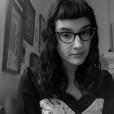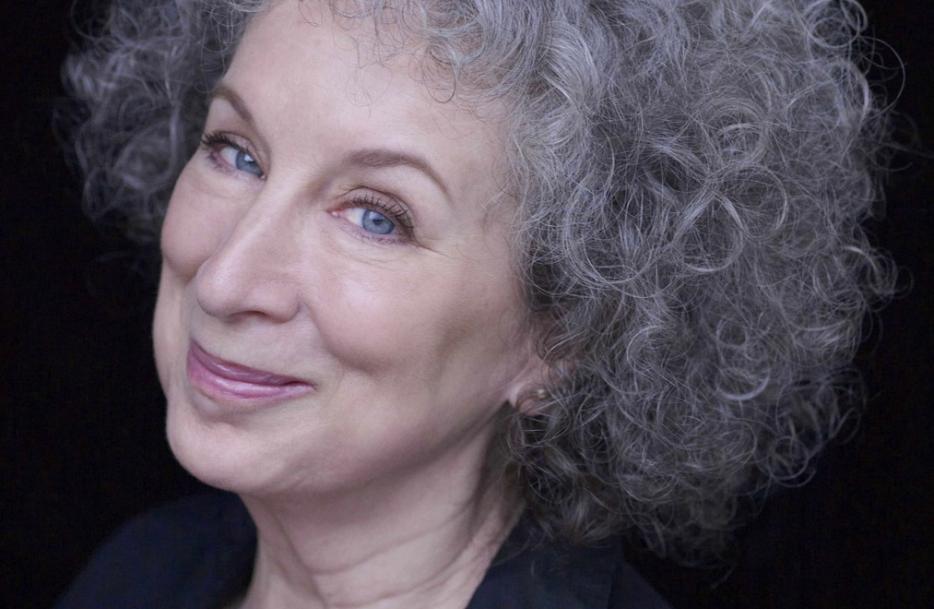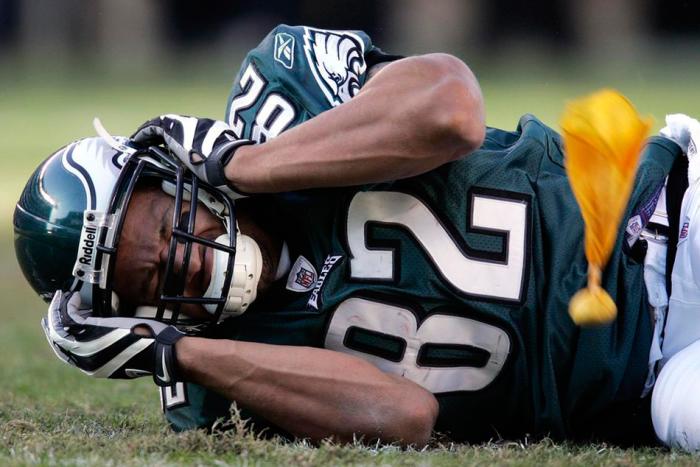Margaret Atwood came to me in high school, shortly after my 18-year-old feminist consciousness was awakened by hearing Bikini Kill and other ’90s punk girls screaming their lungs out in righteous anger. It was an English literature class in which we had to read three books by a single, canonical author. Most of my classmates picked long-dead European white dudes like Joseph Conrad or Graham Greene. I chose Margaret Atwood. By the end of the year, my classmates had grown tired and resentful, eventually collapsing under the suffocating greatness of their literary giants. But after reading The Edible Woman, Cat’s Eye and The Robber Bride, I felt light and energized. Partly because Atwood wrote about difficult women trying to survive under impossible circumstances, which I clung to in the murky swamp of teenagehood, and partly because I saw the woman herself as a model of literary success. I had found my favourite author.
Unlike her companions in the canon, Margaret Atwood is not a dinosaur. Instead of being crushed by the collective weight of her fourteen novels, nineteen honorary degrees and truckload of Giller, Booker and Governor General prizes, she remains a nimble as ever. Her work is at once cutting, precise, and hilarious; she continues to challenge our politics and perceptions of the world. From her horrifying depiction of women as breeders in The Handmaid’s Tale in 1985, she creates fictional worlds that disturb us with their uncanny similarities to our own. Lately, she has expanded her focus to the environment, where her speculative fiction paints a stark picture of a post-apocalyptic society ravaged by genetic engineering and environmental desolation.
Her latest novel is MaddAddam, named after a group of renegade scientists who use their knowledge of biology to create genetically spliced Dr. Frankenstein animals: wolvogs, rakunks and pigoons. It’s the final installment of a dystopian nightmare begun with Oryx and Crake, and then Year of the Flood. A global pandemic called the Waterless Flood has obliterated just about everything, and the scarce survivors must compete with these Franken-animals while scrounging for tins of soy protein and the odd package of stale Oreos. MaddAddam follows the trajectory of Zeb, a tough mountain man, while he and a ragtag cast of characters draw up the beginnings of a new society alongside the Crakers, a new race of people with blue genitals and zero understanding of the world around them.
We met in the tony café Bar Espresso Mercurio on Bloor St. West in Toronto. She cracked jokes in her signature dry monotone, but only occasionally did her face crack into a semi-smile. Rather, her eyes glowed like those of a wise witch, as she zipped seamlessly between topics as varied as cybersecurity, the tradition of utopian/dystopian literature, and World War I battle tactics. With Atwood you're never only ever talking about one thing.
--
When you first started writing Oryx and Crake…
No.
…did you know it was going to turn into a trilogy?
No, I didn’t. But I did shortly after I finished it. It was just a question of what to put where.
There were obviously going to be two groups we don’t know much about in Oryx and Crake, but they are very much in there as part of that world. So, let’s find out about them. Who is behind them and how did they get together? One of those would be the God’s Gardeners, who we see early on throwing coffee into the Boston harbour. The other side is MaddAddam, this group of renegade biologists. So the second book was going to be about the God’s Gardeners and the third book about the renegade biologists. What happens next? So the structure is like this peace sign in which these two [lines] end at the same point, and then the third one goes on from there… And then how about the Crakers?
They’re kind of scary.
Is it possible for human beings to coexist with them without wiping them out? There is now the conclusion that there were a number of hominid groups, not just two. Not just Neanderthals and Homo sapiens either—they seem to have been very closely related but we now know there were other hominids, that it wasn’t a succession necessarily, it was a number of different branches. So who survives and doesn’t survive? Often the encounters between more technologically advanced people and those less advanced have usually been tragedies. How’s it going to be with the Crakers?
They seem to coexist pretty well.
Well, we’ve only had a few months to tell. By the end of the book they’re definitely coexisting.
Glenn, aka Crake, is a fascinating character—essentially he masterminds the cataclysm that ends society as we know it. But the reader never experiences him directly, we only learn about him through other characters’ memories. I wonder what Crake would have to say for himself?
What would Heathcliff have had to say for himself? It’s very hard to do those kinds of characters from the inside unless you’re doing an ironic version. So we have the story of Grendel the Monster who was written by John Gardiner and is basically funny. Whereas Grendel viewed from the outside, from the point of view of Beowulf who is battling him or the Danes whom he is killing and eating—he is terrifying to them. But in his own view it is boring.
He just seems so nefarious.
I take an impartial view. There are some people who are wearing buttons that say “Go Crake,” like a diminution of the world population might be a good thing.
He clearly thought he was doing the right thing.
He improved humankind, eliminated the problems that got us into this great mess we’re in, and then logically it follows that he would have to eliminate those that would destroy his creation. As for the God’s Gardeners view that you shouldn’t use technology because it is so permeable, we’ve just seen that proven out in huge spades, what with the spying on every embassy under the planet and the data mining of everybody who has ever used digital technology. So the God’s Gardeners were right.
Do you see the trilogy fitting within any tradition of ecological speculative fiction?
This strain of thinking has been around for a very long time. It’s a continuation of certain 19th century movements as exemplified by William Morris’s News from Nowhere, and Edward Bellamy through his novel Looking Backward. There were a number of writers then who were fond of writing utopias in which bad industrialization has polluted and ruined [the earth], and then you skip forward to the future and people are doing a lot of weaving, a lot of arts and crafts.
There is also A Crystal Age by W.H. Hudson. Same thing. Bad, polluted present day. He trips over a tree’s roots, one of my favorite transitions into the future. Wakes up in the future covered with little roots. Wakes up in a very William Morris world where people are living in decorated blown glass country houses doing a lot of weaving. Except that his problem is they’re gender neutral, these people. They have no interest in sex, they’re like ants. Except for the tragic figures of the mother and the father who have to reproduce. But that has cut the population quite severely. They’re all very good looking. Our hero being from the past falls in love with one of them and doesn’t know who he is talking with. It doesn’t end well for him.
This is something I studied quite a lot in 1962, and it does lead directly to Tolkien’s Lord of the Rings, which was very influenced by that strain of thinking. Think about it, the jolly hobbits living basically an agriculturalist life. What do those Orcs eat, by the way? It’s never been explained to me, other Orcs probably. The bad places are places of total industrialization, machinery and evil biological creations such as Orcs. Nothing grows, it is all dead. The industrial world is making horrible mistakes and smokes and smells and bad things... Anyway, that strain of utopian agrarian thinking is very old, and it isn’t going to solve our problems now.
Of course, the difference between those thinkers of yore, such as William Morris, and yourself is that you’re able to engage with readers on a massive scale through social media. Are you ever overwhelmed by the number of requests or interactions you get over social media? You get asked to retweet things a lot.
I can go through that in the morning for about 20 minutes, and I don’t retweet things without looking at them. But it doesn’t take that much time. I probably should not have gotten into a flirtation with Rob Delaney.
He loves you!
Apparently so, I’ve never met him. But I’ll send him a book. He said a lot of flattering things. I don’t want to ever meet him because he would be deeply disappointed. Hello, I’m O-L-D.
I’m not sure how well this segues, from Rob Delaney to Canadian culture, but here goes… You were instrumental in starting a conversation about what it means to have a national culture in this country, how we think and tell stories about ourselves. Even before writing the landmark book Survival, in the ’60s and ’70s you were closely involved with small Canadian magazines and presses, like House of Anansi and Coach House. And you’ve remained a supporter across the Canadian cultural landscape. How has your perspective on cultural issues changed over the years.
It is the same story. It is the same Canadian story, because it is still not being taught in schools. There was a brief period when it was but then that went away. It is the same story with small presses. A number of new ones are coming up, it’s amazing how people will throw themselves into this. Biblioasis, for instance, is very active. There are a number of different ones. They do it for the same reason we did it, which is there needs to be a place where people can get started. There are various alternate places and some of them are online.
Can we at least say that the international profile of Canadian literature and writers has improved?
It has changed since 1965, no question. Since 1975, no question. People no longer say when you’re being interviewed in England, “So you’re the only Canadian writer.” They no longer say that. And the no longer say “Oh, a Canadian writer. Isn’t that an oxymoron?” So they don’t say that anymore. That is good. You still do to some extent in the States have to let people know, “Well, actually he’s Canadian.”
Same old, same old. When my second novel was coming out in the States, it was Surfacing, the guy said “Have you got any reviews?” And I said, “Well I’ve got these reviews from Canada.” He said, “Oh darling, please. Canada is deaf down here.” So it may not exactly be deaf, and there are a lot of hidden Canadians in the States, particularly in Hollywood. But it isn’t something you’re going to use necessarily as a positive advertisement. Maybe it’s a fact that you don’t mind mentioning, or maybe you will try not to mention it.
But it’s not something to boast about.
There was one moment when [being Canadian] was a big plus—World War I after Vimy Ridge. First of all, the Canadians took Vimy Ridge against all odds when others had failed, and after that they never lost a battle. They became sort of golden, Canadians. It’s very funny, they got used in advertisements: “The Canadian sergeant says, I prefer this trench coat for my trench warfare.” So that was the moment when Canadian was a positive advertising label. Thank you Sir Arthur Currie.
You know what Sir Arthur Currie did? Sir Arthur Currie, an accountant by profession, was in charge of [the battle at] Vimy Ridge. He did three unheard of things that everybody thought he was nuts to do. Number one, for the first-time ever enlisted men were told where they were going. They were given maps. That had never happened before. Top brass would just say, “Go.” This time they had maps.
Second, he rehearsed the battle, like a ballet. He took them off somewhere else, and they rehearsed it like a ballet, counting. They used a rolling barrage technique, which is your guns fire over the tops of the heads of your advancing men. So you have to count for that. Stand up, count ten, run forward, count ten, get down, boom. Stand up, run forward, crouch down, boom. Number three, he triangulated the enemy guns using a balloon. Do you know what I mean, triangulated? He took soundings from three positions. Over here, over here and up in the air, which allows you to pinpoint exactly where the enemy gun is firing from and allowed those guns to be taken out as much as possible before the advance, which was an uphill advance, it was a ridge, very hard to do. Isn’t that fascinating? You can go to Vimy Ridge, it’s still all there including the cement-lined trenches, tunnels really where the troops waited two days standing up—because there wasn’t room for them to lie down—without toilets before they were to start the attack. Can you imagine what it must have been like? The graffiti is still there. You shed a tear. You can’t walk off the path of because there are unexploded shells.
Military history, as you’ve just shown, is one of your passions. Another is technology and its impact on society. Not only have you written and thought deeply about technology, but in your life you’ve embraced it to some degree.
I’ve explored it. I’m still exploring it. Yes there is some more coming with things I need to explore. The stuff pours out. I mean every minute somebody has some new idea. It’s interesting, we’re in this sort of… Have you ever looked at early typewriters? We’re in the early typewriter stage of the Internet.
New smartphones are coming out all the time.
Yes, but that’s just new iterations of something we already have. By ideas I mean... some of this stuff is just crazy.
In what way do you think the evolution of technology changes the way we communicate?
I wonder, does it? Here we are talking. You have a recorder. It’s smaller than recorders used to be, they used to be this big thing with wheels and tape, but it’s a recorder. You get a lot of nonsense about, “Won’t Twitter destroy English language?” Well, did the telegram destroy the English language? No. People wrote in Telegram-ese because you paid by the word. So they wrote these cryptic condensed things. But they didn’t talk like that any more than I’m talking to you in 140 characters. So it is a short form communication method, like writing on washroom walls. Or like Romans writing graffiti back in Rome, or Vikings writing runes on the walls of tombs they had broken into. You weren’t going to write a novel on the wall of a tomb. But you were going to write “Thorfeld was here,” which is pretty much what they wrote. “Found no treasure. Shit.”
Does it change the way we communicate? We are no longer getting great collections of letters, but mark my words it’s going to be back. This news just in, I don’t know whether you picked it up, the Kremlin is going back to typewriters, because the Internet leaks like a sieve. And by the way, while we’re on the subject of leaking, who’s leaking that stuff from Prime Minister Harper’s office? Who? What? It’s so interesting.
The interns?
Take Mr. [Edward] Snowden. This is something that the technology enables you to do, so you can walk out of a place with a memory key. You couldn’t have done that when it was all paper on files. In the world of John Le Carré, whom I adore, you might have been able to photograph some files, get microfiche and what have you. But you could not have walked out of the place with all that information [as Snowden did], just with maybe a few documents. Horrifying. Frightening.
You’re only as strong as your weakest link and what it has enabled. It used to be cryptographers and telegram operators who did things like this, but you have a whole level of resentful, underpaid code serfs, somebody’s going to… In Year of the Flood, the only safe way is to be in the same room with the person and write it on a piece of paper hidden from all cameras. Do not speak. Read the message, then burn it.






